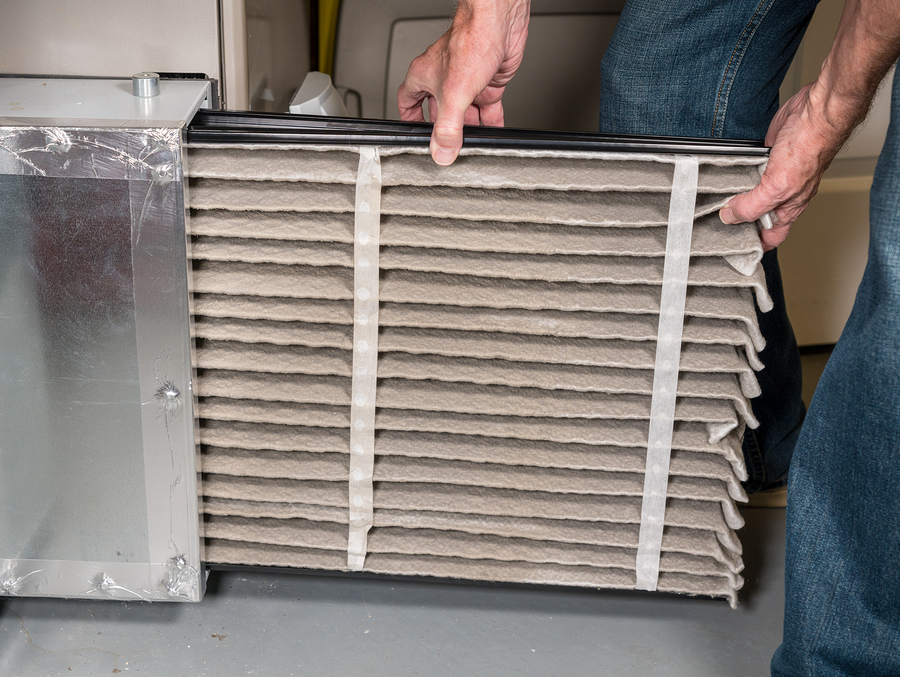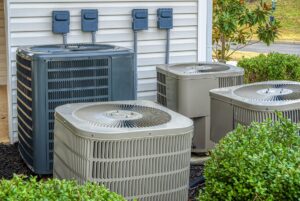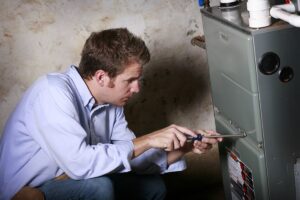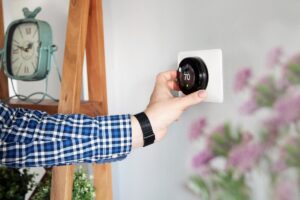Since it’s still winter, here’s a quick PSA – when was the last time you replaced your furnace filter? Most disposable filters should be replaced every three months. However, if someone in your home suffers from allergies or asthma, you may have to replace your HVAC filters more frequently. That should also be the case if you have pets in your home.

What is The Function of Your Furnace Filter?
Your furnace filter has two key functions.
- It helps to keep dust and dirt particles out of your home’s air, thus improving the quality of indoor air you breathe every day.
- In addition, it also works to protect the furnace itself by trapping small particles that can damage its internal components and reduce efficiency.
When the furnace air filter is dirty, it lets dirt and debris into the furnace itself, which can result in clogged burners and reduced performance. It can also cause your furnace to overheat and finally break down. A dirty filter also allows contaminants, such as dust and pollen, to enter your home’s air supply, which is bad for your family’s health.
Now that we have that covered, let’s talk about how to select the right air filter for your furnace. One important aspect to look at is the filter’s MERV rating. But what is the MERV rating and what has it got to do with your furnace filter?
What Does MERV Mean?
MERV stands for Minimum Efficiency Reporting Value, which is a rating system designed by the American Society of Heating, Refrigerating, and Air Conditioning Engineers (ASHRAE). The rating indicates the size of particles the air filter is designed to capture. Ranging from 1 to 20, the larger the number, the better the filter is at catching small particles.
Below is a table grouping MERV ratings by particle size:
| MERV | Min. particle size | Typical controlled contaminant | Typical Application |
| 1–4 | > 10.0 μm | Pollen, dust mites, cockroach debris, sanding dust, spray paint dust, textile fibers, carpet fibers | Residential window AC units |
| 5–8 | 10.0–3.0 μm | Mold, spores, dust mite debris, cat and dog dander, hair spray, fabric protector, dusting aids, pudding mix | Better residential, general commercial, industrial workspaces |
| 9–12 | 3.0–1.0 μm | Legionella, Humidifier dust, Lead dust, Milled flour, Auto emission particulates, Nebulizer droplets | Superior residential, better commercial, hospital laboratories |
| 13–16 | 1.0–0.3 μm | Bacteria, droplet nuclei (sneeze), cooking oil, most smoke, and insecticide dust, most face powder, most paint pigments | hospital & general surgery |
| 17–20 | < 0.3 μm | Virus, carbon dust, sea salt, smoke | Electronics & pharmaceutical manufacturing cleanroom |
Note: Table copied from Wikipedia
What MERV Should I Use in My Home Furnace?
In general, filters with higher MERV ratings are more effective and improve air quality – but are also more expensive. Plus, higher doesn’t always mean better for homeowners. MERV ratings above 16 are typically used in specialized commercial settings where air filtration is critical, such as hospitals.
For residential furnaces, filters range from 4 to 12 on the MERV scale. A basic MERV 4 filter will likely be the cheapest but won’t catch certain small particles (like dust mites and pet dander) that could be in your home. If your family has health or allergy issues, then you may want to look for a high-efficiency filter that’s MERV 11 or higher. But for most households, a MERV 7 or 8 filter might be the sweet spot between performance and cost.
Other Rating Systems.
When shopping for furnace air filters, don’t confuse MERV with other rating systems that may appear on packaging (especially from big box home improvement stores). This isn’t to say one system is right and the other is wrong – they’re just rated by different standards.
How to Change Your Furnace Air Filter
Your furnace air filter is usually located inside the blower compartment, which you’ll find between the air return and the air handler. You have to open the blower compartment door to reach the furnace filter. All you need is a screwdriver or pliers to remove it, and then you can replace it with your new filter. Be sure to note the direction of the airflow arrows printed on the side of the filter. This is usually in the direction of the main furnace unit and away from the unit’s air return. Finally, remember to check your filter every 1–3 months (depending on the MERV rating and other factors like the presence of pets in your home) for maximum efficiency and performance.
You should also have a plastic bag handy to dispose of your old filter, as it’s important to keep the dust from escaping into your home. And be sure to vacuum around the blower compartment after changing the filter – you don’t want any buildup in there that could interfere with airflow or cause a fire hazard.
Now that you know how to select the right MERV rating for your furnace filter and how to change it, you’re ready to keep your home air clean. But if you feel you cannot do any of these tasks yourself, a qualified technician from your local heating and cooling company, like Robert B. Payne, can help.
A Word of Caution.
One final note. Since higher-rate filters allow less air to flow through your furnace, it’s a good idea to check if your system has a maximum MERV rating. The wrong type of air filter can force your furnace to work harder and increase the risk of it breaking down.
Get Expert Help With Your Furnace Filter Selection
Furnace filter selection can be confusing, especially when it comes to MERV ratings. If you’re unsure which filter is best for your system and needs, then it’s a good idea to consult with a professional. An HVAC technician can evaluate your home’s air quality, suggest the right type of filter, and even help install it correctly. If you have any questions about picking the right air filter for your home furnace, give Robert B. Payne a call, and we’ll be happy to provide our expert opinion.






